It’s a Spring chock full of interesting exhibitions in the US and abroad. You’ve have just a few days remaining to see Beyond the Trees: Dona Look and Dorothy Gill Barnes http://centerfor
artinwood.org/
exhibition/dorothy-
gill-barnes-dona-
look-beyond-the-
trees/ at the Center for Wood Art in Philadelphia, Pennsylvania. Two browngrotta artist are featured in this exhibition, which closes April 23rd.
Their work can also be seen through June 26th at the Morris Museum in Morristown, New Jersey in Green From the Get Go: Contemporary International Basketmakers, curated by browngrotta arts. In New York, New York, the Experiments in Art & Digital Technologies includes innovative bga artist Lia Cook, http://www.liacook.com/wp-content/uploads/2016/04/EADT-Press.pdf who will lecture in New York on May 5th https://creativetechweek2016.sched.org/event/6DN5/weaving-and-digital-innovation.
Work by Lia Cook is also front and center in a San Francisco, California exhibition, Lines that Tie: Carol Beadle and Lia Cook http://sfmcd.org/press-release-lines-that-tie/ the exhibition is curated by bga artist, Deborah Valoma. Cook will lecture there tomorrow, April 21st. Identify Yourself, in Honolulu, Hawaii http://honolulumuseum.org/art/exhibitions/15320-identify_yourself/, which closes this week, on April 24th, also features work by Lia Cook. Two events in Wilton, Connecticut to attend. Hickory, Ash and Reed: Traditional Baskets, Contemporary Makersat the Wilton Historical Society, http://www.wiltonhistorical.
org/exhibitions.html, Includes several baskets by the late Marian Hildebrandt, whose work is represented by browngrotta arts and whose work is also currently on exhibit in Green from the Get: International Contemporary Basketmakers at the Morris Museum.
Artboom: Celebrating Artists Mide-Century, Mid-Career is open at browngrotta arts for just 10 days, from April 30th-May 8th https://arttextstyle.com/
2016/04/19/art-barn-
2016-artboom-
celebrating-artists-
mid-century-mid-
career-wilton-ct-
april-30th-may-8th/.
In the halls of the Musée cantonal des Beaux-Arts in Lausanne, Switzerland, Nomadic tapestries, an exhibition of some of the extensive contemporary collection of the Toms Pauli Foundation, traces in the evolution of textile art from the 1960s to 2000s,
http://www.musees.vd.ch/en/museem-beaux-arts/exhibition/past-exhibitions/tapisseries-nomades-fondation-toms-pauli-collection-xxe-siecle/. browngrotta arts has work available by twelve of the artists included in this very significant international survey of art textiles — Magadalena Abakanowicz, Lia Cook, Sheila Hicks, Jan Hladik, Ritzi Jacobi, Naomi Kobayashi, Maria Laszkiewicz, Jolanta Owidzka, Mariette Rousseau-Vermette, Wojciech Sadley, Sherri Smith and Hideho Tanaka. The exhibition will be on view through May 29th. In Tilburg, the Netherlands the Textile Museum is hosting a major retrospective of American artist and textile pioneer Sheila Hicks, born 1934 http://www.textielmuseum.nl. Internationally renowned, thanks to her participation in numerous large solo and group exhibitions, this is her first appearance in the Netherlands for many years. The exhibition extends through June 5, 2016.

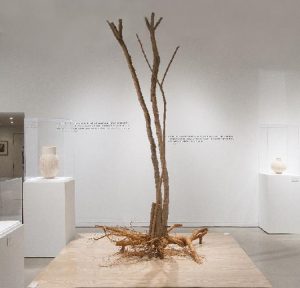


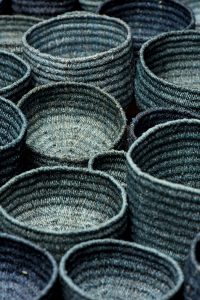
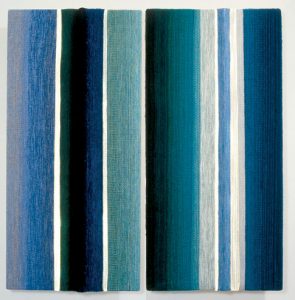




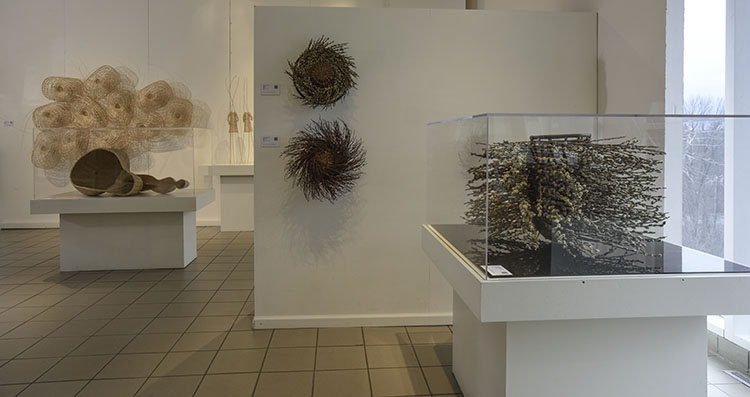
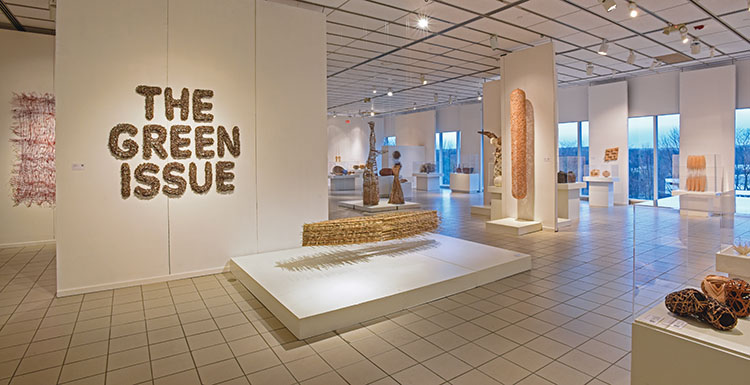
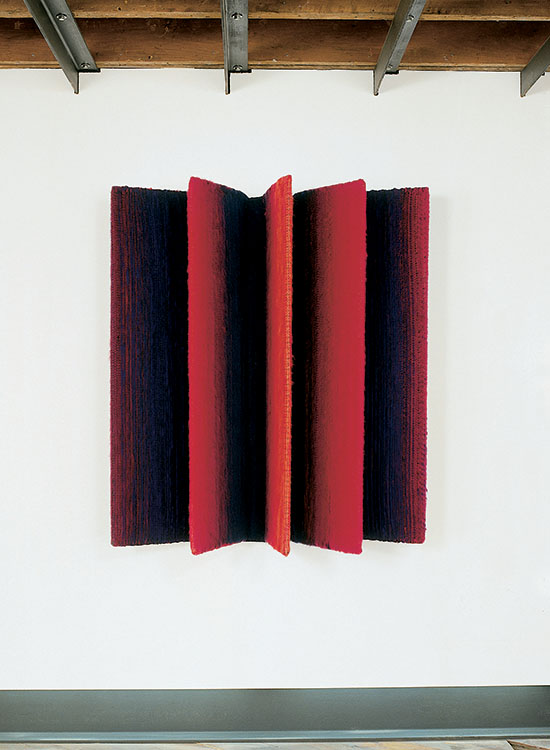
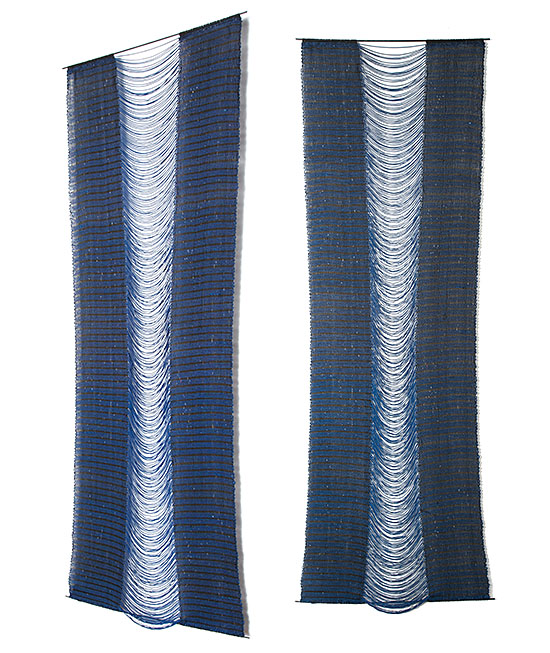


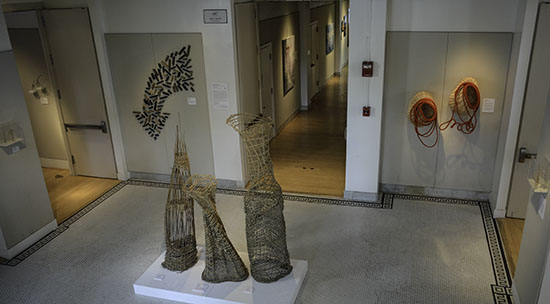
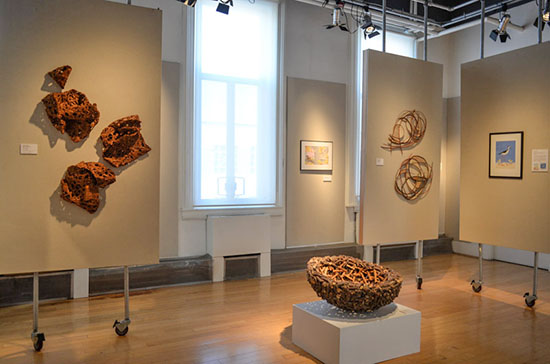
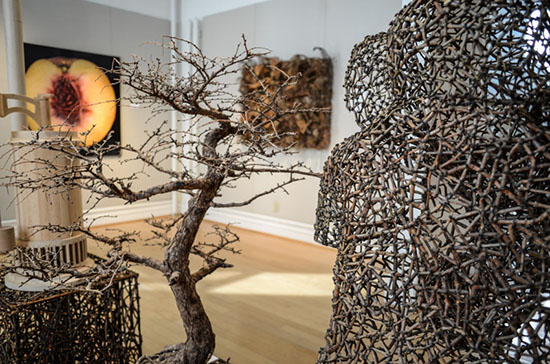

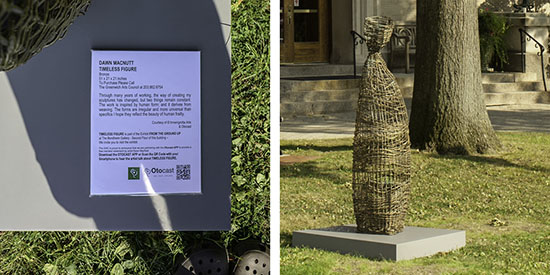



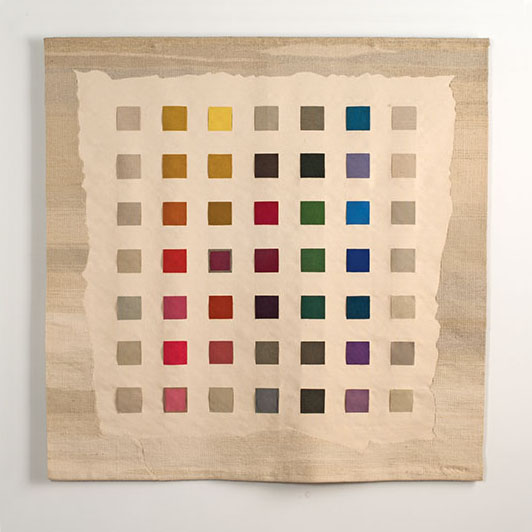

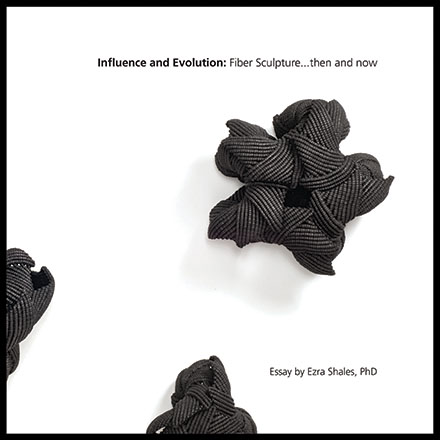
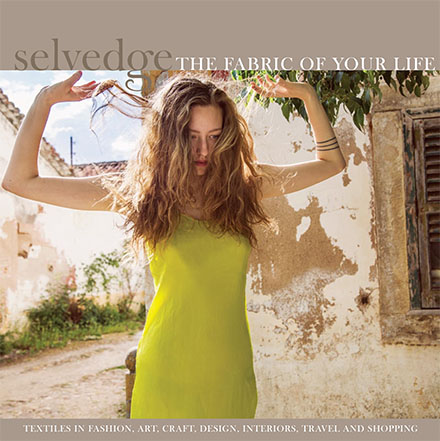
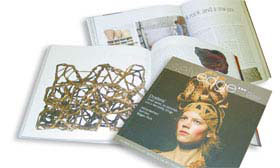
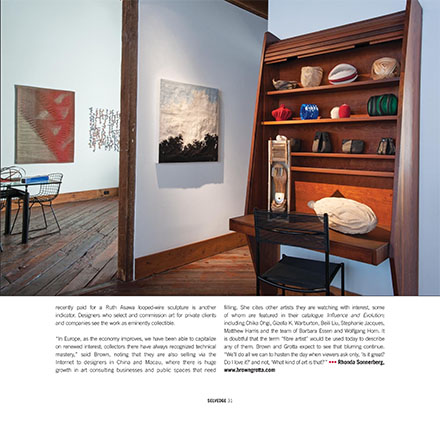

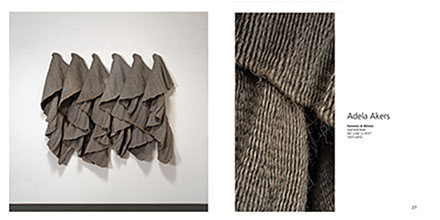
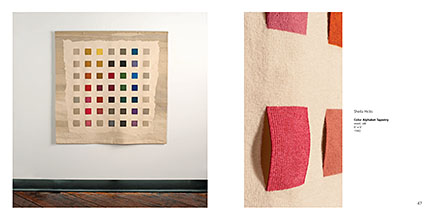
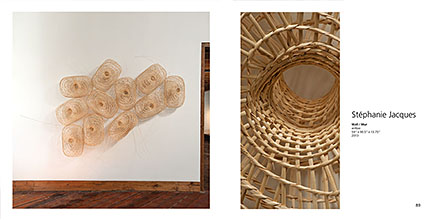
It’s Never Too Early: How to Buy Art in Your 20s
Lizzie Farey($1,800), Deborah Valoma($1,700) and Stéphanie Jacques($1,200). Photo by Tom Grotta
Thanks to the DIY movement and a mass of online and cable design and decor resources, we’ve never had more encouragement to create environments that inspire and invigorate. Art can be an essential element of such an environment and investing in art need not be a bank breaker. Domino, a curated site that encourages readers to “bring your style home,” offers several tips for buying art in your 20s, including not buying too big and not being afraid to invest http://domino.com/how-to-buy-art-in-your-twenties/story-image/all. We at browngrotta arts have a few additional thoughts:
INYO (95-2), Tsuruko Tanikawa, brass and iron wire, coiled and burned, 7.5″ x 6.5″ x 14″, 1995 ($1,200)
1) Think objects: If you are in your first apartment or are fairly certain that a move is in your future, Ceramics, Art Baskets, Glass sculptures can be easier to place in your next home than a large wall piece may be.
Naomi Kobayashi Red & White Cubes ($1,000 each)
2) Invest for impact: Prints are generally less expensive than originals, editions less expensive than a one off. And you will find that some mediums are, in general, priced more accessibly than others. Art textiles and fiber sculpture are an example. Work by the best-known artists in the field go for under a million dollars, compared to tens of million dollars for paintings by well-recognized artists. You can start small with works in fiber, ceramics and wood, and create a small, but well-curated, collection. Consider Naomi Kobayashi, a Japanese textile artist whose work is in the permanent collection of many museums, including the Metropolitan Museum of Art and whose work can be acquired for $1000. Or an up-and-coming artist like Stéphanie Jacques from Belgium, whose masterful multi-media works address issues of gender and identity, and begin at prices below $1500.
GRAY WITH BLACK, Sara Brenan, wool & silks linen, 12.5” x 19”, $1,900 photo by Tom Grotta
3) Take advantage of digital placement: Reviewing art online is a great way to expose yourself to a wide variety of work, and develop your personal aesthetic. Once you’ve found a work that appeals, digital placement can give you a greater level of confidence before you press “Buy.” At browngrotta arts, we ask clients to send us a photo of the space the propose to install the work. We can digitally install the piece, to scale and with shadow, so you have a sense of how will work there.
32pc CONSTRUCTION III, Pat Campbell, rice paper, reed, 8″ x 7.5″ x 5.5″, 2002
4) Document: If the work you purchase has appeared in a book or a catalog, make sure you get a copy. Ask the seller for any information he/she has on the artist for your files. On each artist’s page on browngrotta.com, you can find a list of publications in which the artist’s work appears. The documentation is good to have for insurance and appraisal purposes and you can watch as the artist’s cv —hopefully — expands in the next several years.
5) Buy for love: It’s great to learn 10 years down the road that a work of art you purchased has appreciated and is worth more than you paid for it. We’d argue, though, that if you’ve enjoyed owning it for 10 years, and thought each time you looked at it, “I really love that piece,” you’ll have gotten your money’s worth, and enriched your life in the process.